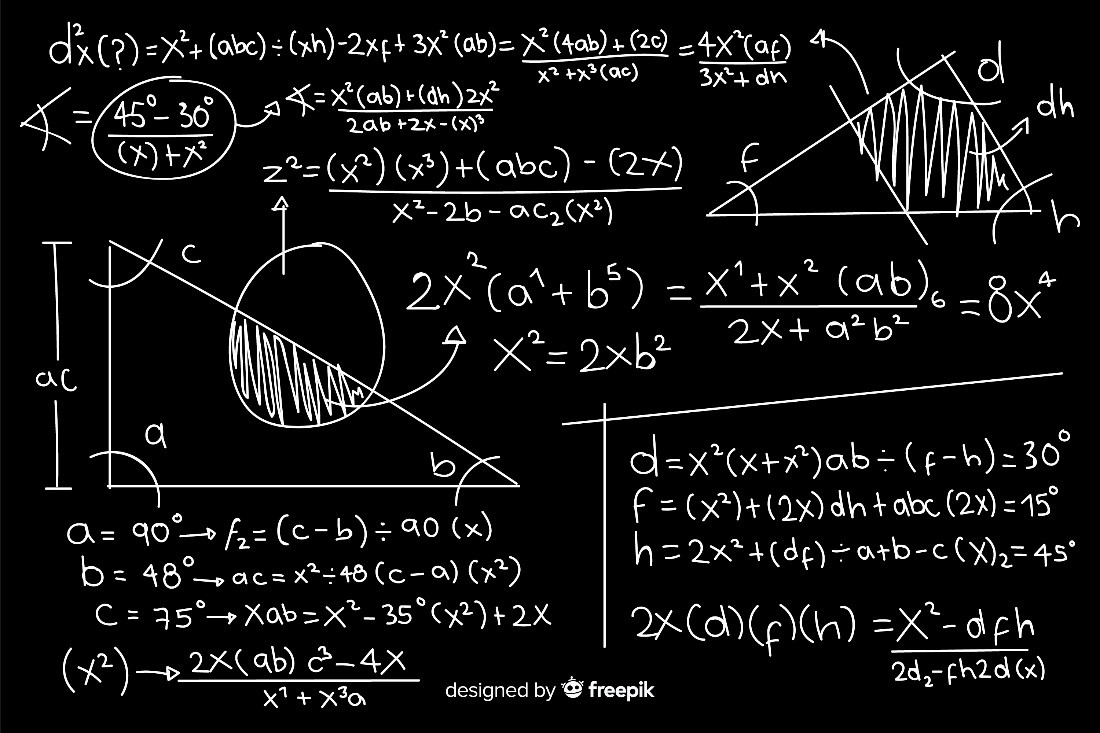A Comprehensive guide to master Elimination method
In this blog, you will learn about the elimination method used to solve the linear equations.
November 30, 2023
Career Expert & Blogger

One of the fundamental algebraic strategies is the elimination method, which is a methodical way to solve systems of linear equations. To solve linear equations, we use this technique. It offers a powerful and versatile way to find the values of multiple variables that satisfy a set of linear equations simultaneously.
The elimination technique is a vital technique for problem-solving and simulating real-world situations. It is significant in different areas of the subject, including mathematics, physics, economics, and engineering. This article will explain the elimination method's definition and the procedures for applying it to the solution of linear equations.
Elimination method: Definition
A technique used to solve systems of linear equations is known as elimination method. This method involves adding or subtracting equations to eliminate one of the variables, simplifying the system to a point where the variables can be solved step by step.
A system of linear equations is a set of two or more equations that have two or more variables. Each equation in the system typically takes the form of a linear equation.
Steps Used for Solving Linear Equations Using the Elimination Method:
Step 1:
Eliminating variable select them
To remove a variable (x or y) from the equations, choose it. Our main purpose for this is that both equations equal and additive inverses of each other.
Step 2:
Create Coefficients with Equal Magnitudes
To make an equal constant we multiply the suitable variable.
Step 3:
Subtract or add
This method helps to eliminate only one variable.
Step 4:
Determine remaining variable
After solving we find step 3 to determine the remaining variable.
Step 5:
Putt all value and solve
To find the remaining variable value we put the value in the original equation.
Step 6:
Check the Solution
Verify the solution by substituting the values of both variables into all original equations. The solution should satisfy all equations. You can also try an elimination calculator to verify the solution or to solve system of equations by elimination with steps.
Now that we have a clear understanding of the elimination method and its steps, let’s explore it further through a series of examples that highlight its practical applications.
Solving Systems of Three Equations Using the Elimination Method
It is compulsory to solve three equations by elimination method we first make sure our equation is written in this form AX +By = C or Ax + By + C = 0. This general equation shows that no fraction is given in the coefficient. After arranging them, we select any two pairs of equations and select one variable that we want to eliminate them.
Then we choose the other two equations given in three equations and find the same coefficient that we have already found. In this way we find easily two equations with two variables then we follow our previous method which we already used to calculate for two equations. This way we find easily our required result.
How to solve problems of elimination method:
Example number 1:
2x + 3y = 12 (A)
4x - 5y = -9 (B)
By using the elimination method solve the given two equations.
Solution:
Step 1:
Select eliminating variable.
In this case eliminate the variable x.
Step 2:
Create Coefficients with Equal Magnitudes
We'll multiply the first equation by 2 and the second equation by 1 to make the coefficients of ‘x’ equal in magnitude but opposite in sign.
4x + 6y = 24 (A)
4x - 5y = -9 (B)
Step 3:
Add or Subtract Equations
Now, subtract equation (B) from equation (A):
(4x + 6y) - (4x - 5y) = 24 - (-9)
Simplify:
11y = 33
Step 4:
Solve for the Remaining Variable
Divide both sides by 11:
y = 3
Step 5:
Substitute and Solve
Substitute the value and then simplify, we get.
2x + 3(3) = 12
Simplify:
2x + 9 = 12
Subtract 9 from both sides:
2x = 12 - 9
2x = 3
Now find the value of x and divide both sides with 2:
x = 1.5
Step 6:
Check the Solution
To check the solution, substitute the values of ‘x’ and ‘y’ into both original equations:
For equation (A)
2(1.5) + 3(3) = 12 (True)
For equation (B)
4(1.5) - 5(3) = -9 (True)
The solution (x = 1.5, y = 3) satisfies both equations, confirming its accuracy.

Example 2:
Three-Equation System with Fractions
Now, let’s tackle a more complex system with three equations:
3x + 2y = 4 (A)
4x - 3y = 1 (B)
2x + y = 2 (C)
Solution
First, we find the Y variable value.
Step 1:
Choose a Variable to Eliminate
We’ll eliminate ‘y’.
Step 2:
Create Coefficients with Equal Magnitudes
We’ll multiply equation (A) by 3, equation (B) by 2, and equation (C) by -6 to make the coefficients of ‘y’ equal in magnitude but opposite in sign.
9x + 6y = 12 (A)
8x - 6y = 2 (B)
-12x - 6y = -12 (C)
Step 3:
Add or Subtract Equations
Now to find the value of y, we add equation (B) and equation (C).
(8x - 6y) + (-12x - 6y) = 2 - 12
Simplify:
-4x = -10
Step 4:
Solve for the Remaining Variable
Divide both sides by -4:
x = 10 / 4
x = 2.5
Step 5:
Put value and solve
Now that we have the value of ‘x’, substitute it into equation (A):
3(2.5) + 2y = 4
Simplify:
7.5 + 2y = 4
Subtract 7.5 from both sides:
2y = 4 - 7.5
2y = -3.5
Divide both sides by 2:
y = -1.75
Step 6:
Check the Solution
To check the solution, substitute the values of ‘x’ and ‘y’ into all three original equations:
For equation (1)
3(2.5) + 2(-1.75) = 4 (True)
For equation (2)
4(2.5) - 3(-1.75) = 1 (True)
For equation (3)
2(2.5) - 1.75 = 2 (True)
So, x = 2.5, y = -1.75 satisfy all equations.
Example 3: To solve for three equations:
2x + 3y - z = 7
4x - 2y + 5z = 8
3x + y + 2z = 10
Solution
Given data
2x + 3y - z = 7 (1)
4x - 2y + 5z = 8 (2)
3x + y + 2z = 10 (3)
Step 1
Select the appropriate set of equations to remove the variables.
By using equations (1) and (2) we eliminate the value of z. For this, we multiply equation (1) by 5 and equation (2) by 1 then simplify the equation.
10x + 15y - 5z = 35 (4)
4x - 2y + 5z = 8 (5)
14x -13y = 27 (6)
Step 2
Now we eliminate the value of z for the other two equations given in these three equation for this we select equation (1) and equation (3). Multiply equation (1) by 2 and equation (3) by 1. Then add them
4x + 6y – 2 z = 14
3x + y + 2z = 10
7x + 7y = 24 (7)
Step 3
Now we eliminate the value y by using equation (6) and equation (7), multiply equation (6) by 1 and equation (7) by 2 then subtract them.
14x -13y = 27
± 14x ± 14y = ± 24
-27 y = 3 (8)
Step 4
Simplify equation (8) then put the value of y in equation (7)
y = -1/9
put value in equation (7) we get the value x.
7x + 7(-1/9) = 24
7x = 24 + 7/9
Simplify the equation
x = 216/7
x = 216/7
put the value of x and y in equation (1) we get the value of z.
2 (216/7) + 3 (-1/9) - z = 7
-z= 7 – 432/7 + 1/3
-z = - 1296 + 7/21
-z = -1189/21
z = 1189/21
So, this is our complete solution
The value of x = 216/7, y = -1/9 and z = 1189/21
Summary:
In the article, we have discussed the definition of the elimination method and the steps used for solving linear equations. Moreover, discusses the elimination method with the frequently asked question. Finally, solved the different examples to understand the topic in detail.
FAQs:
Question #1:
What distinguishes the substitution technique from the elimination method?
Answer:
While both methods are used to solve systems of linear equations, the elimination method involves adding or subtracting equations to eliminate one variable, whereas the substitution method entails putting the expression from one equation for one variable into the other equations.
Question # 2:
What are the essential steps in the elimination method?
Answer:
The key steps include choosing a variable to eliminate, creating coefficients with equal magnitudes but opposite signs, adding or subtracting equations to eliminate the chosen variable, solving for the remaining variable, substituting and solving for the other variable, and finally, checking the solution's validity.
Question # 3:
Discuss the basic challenges we face in solving the elimination method.
Answer:
Challenges may include dealing with fractions, the need for multiple operations, and the potential for errors when manipulating equations. It's important to be systematic and organized throughout the process.

